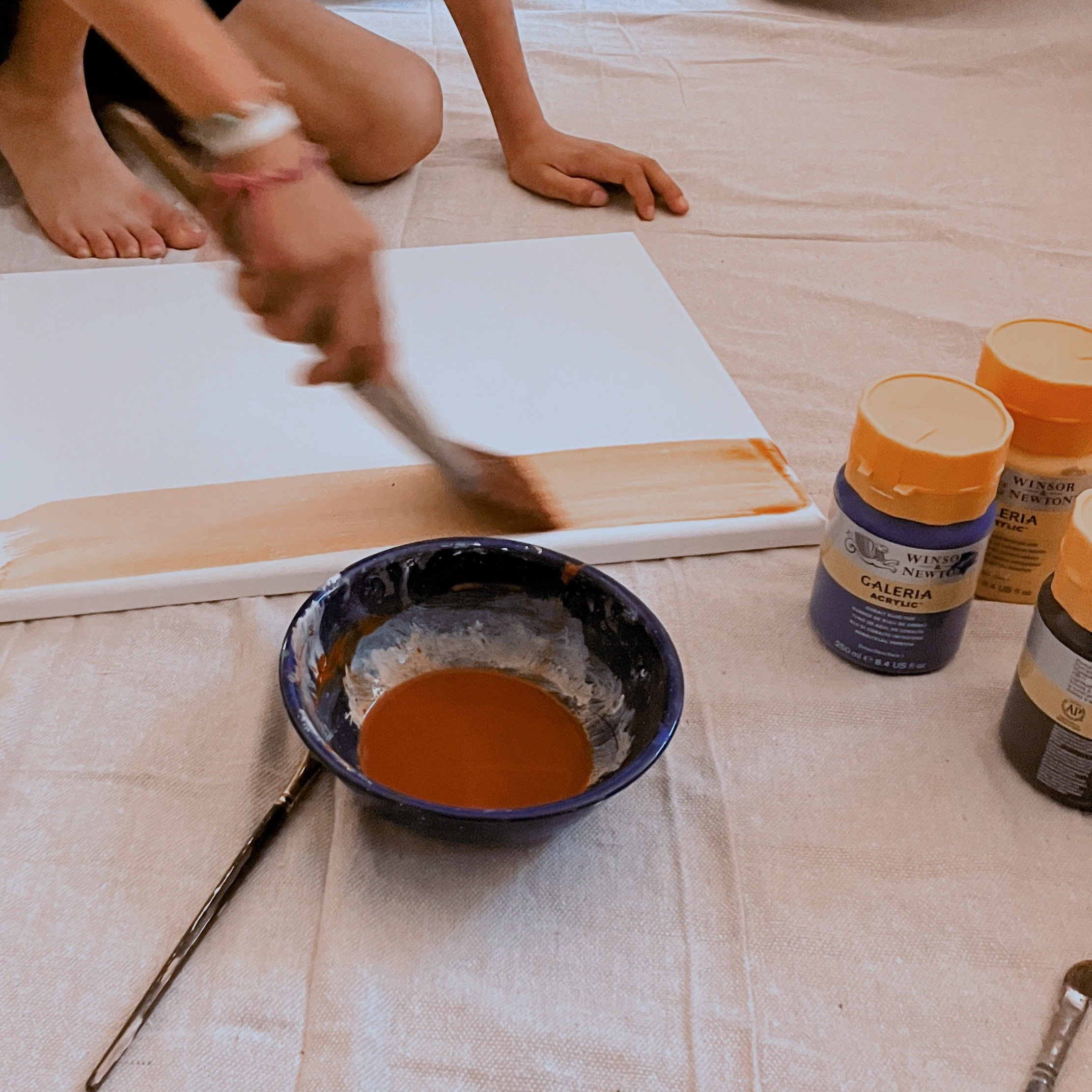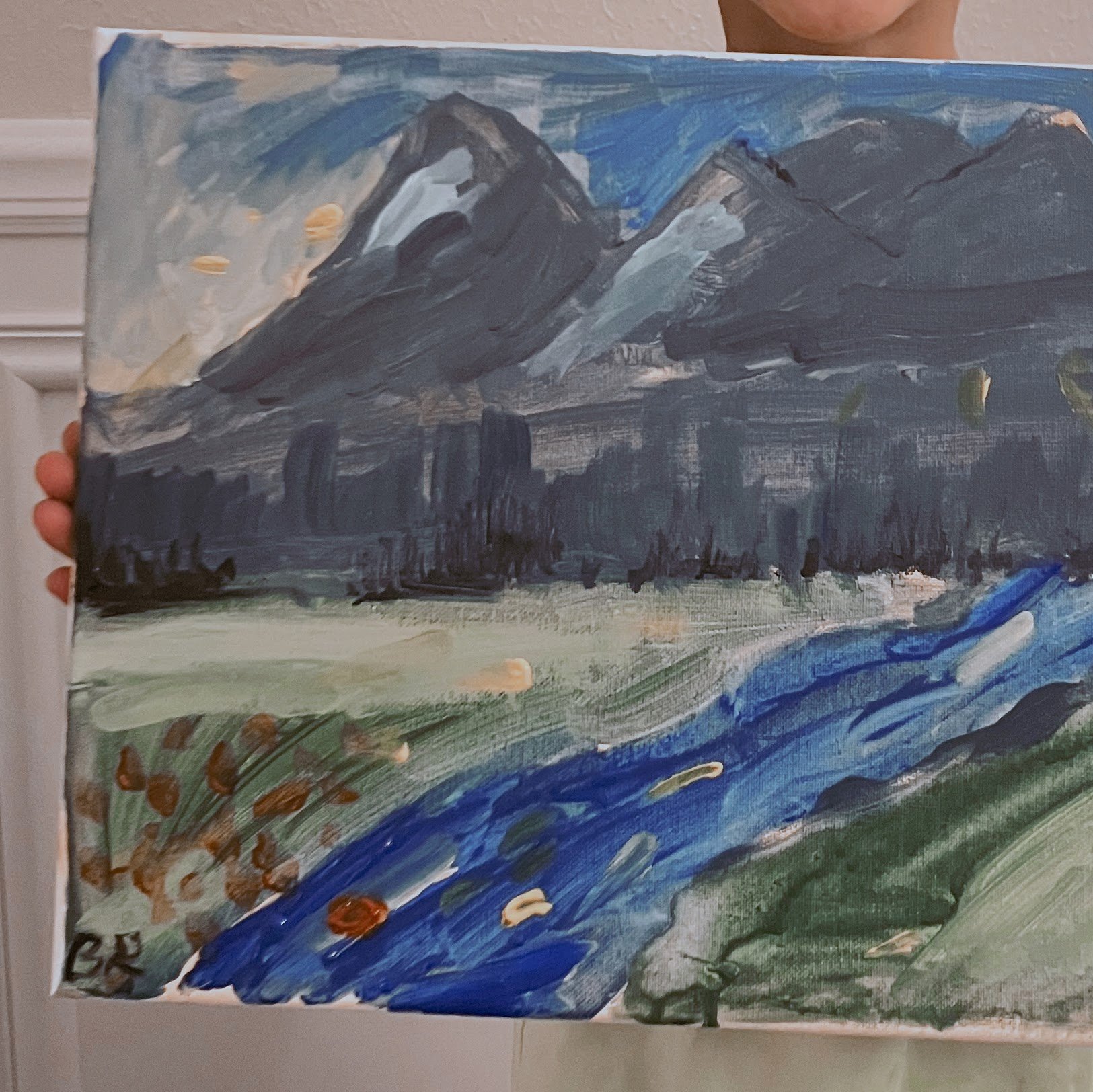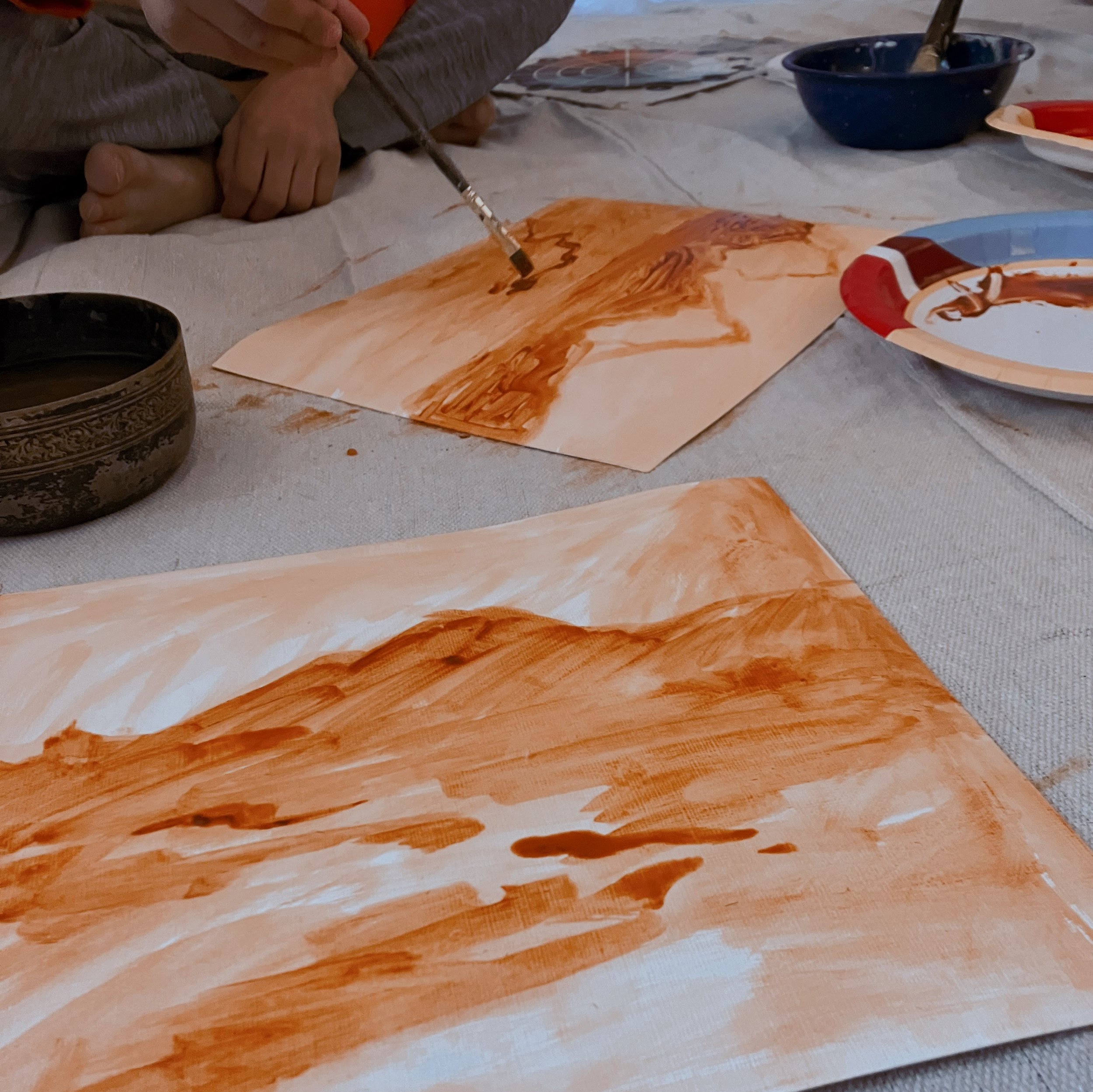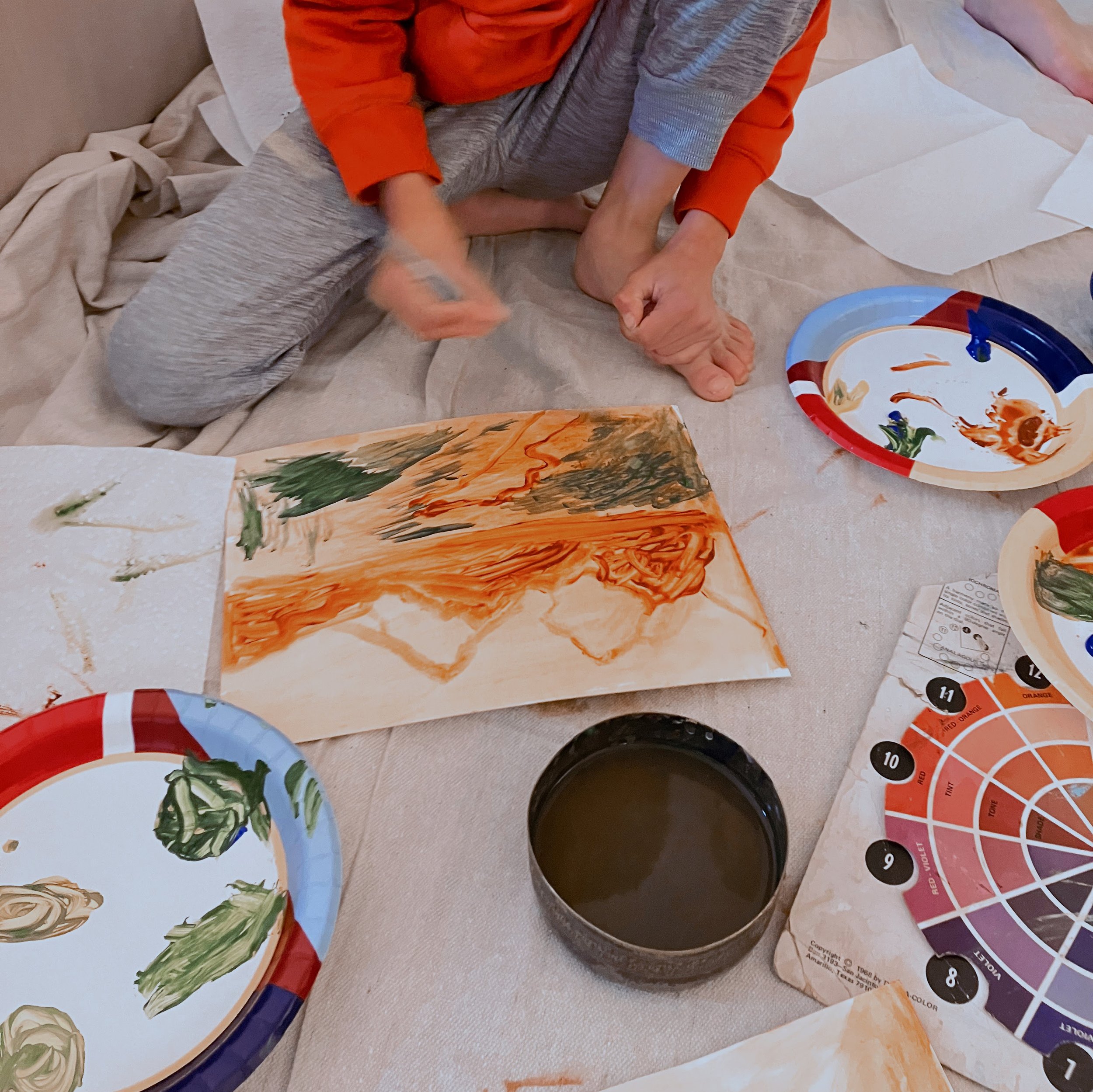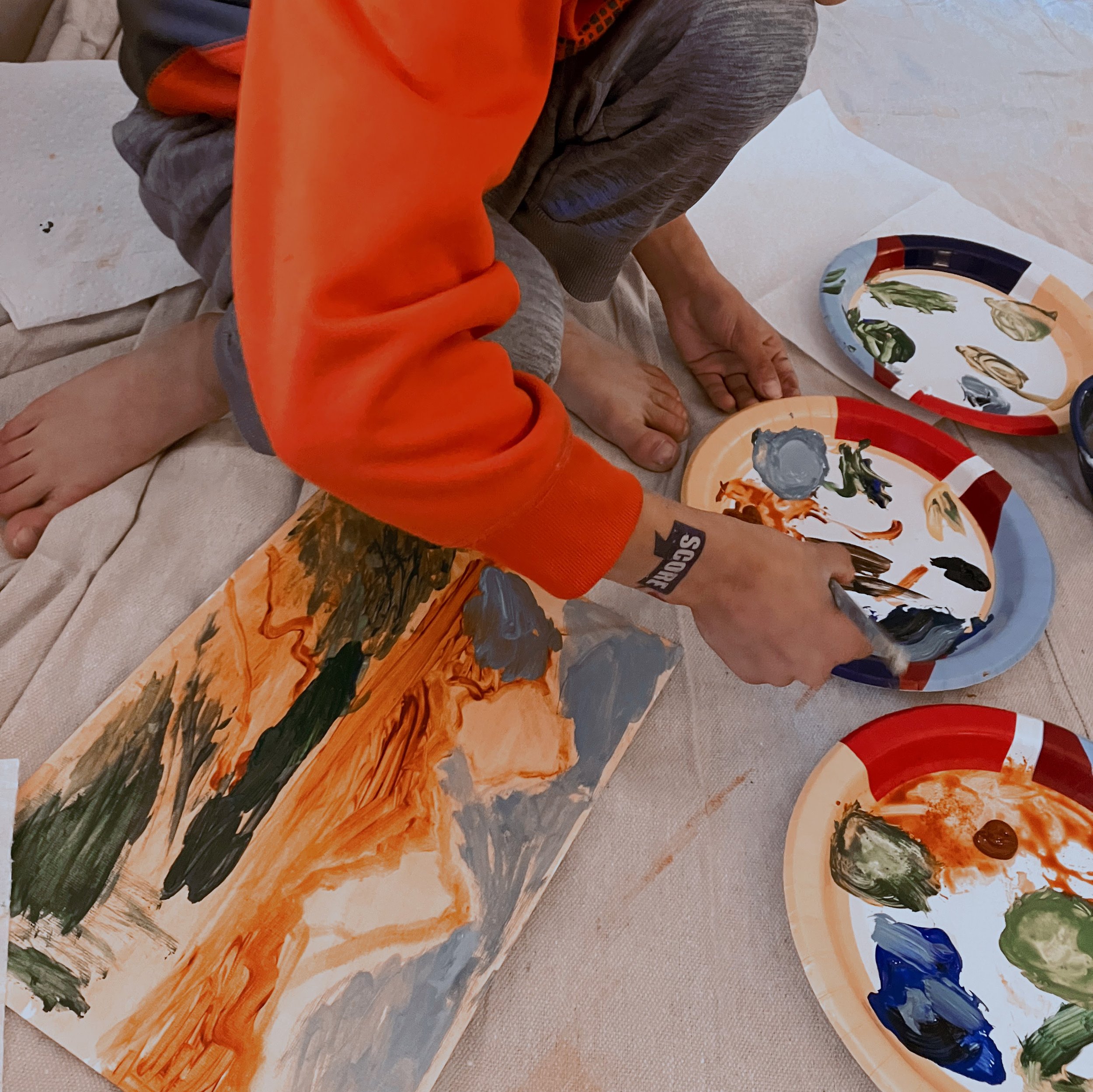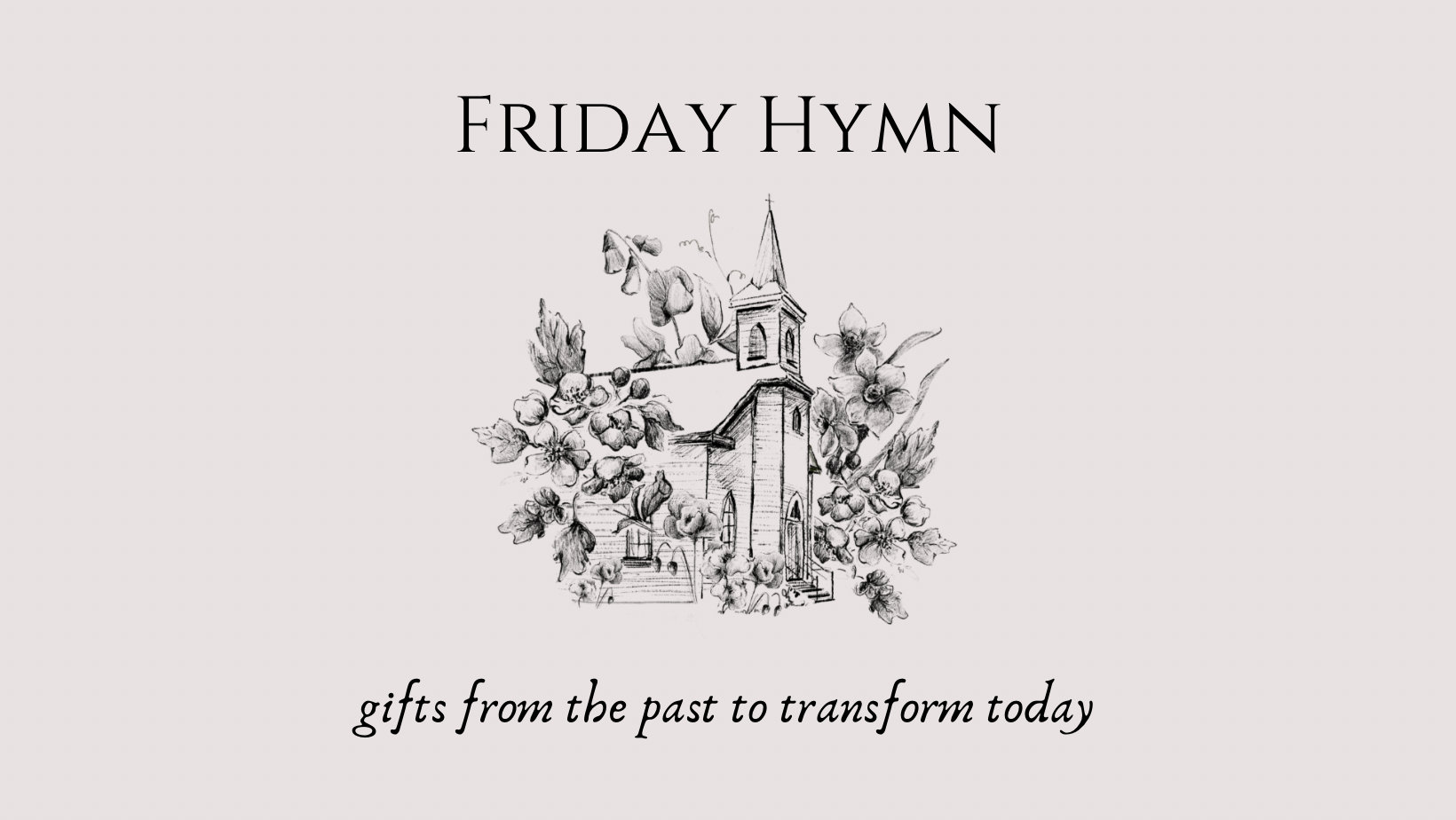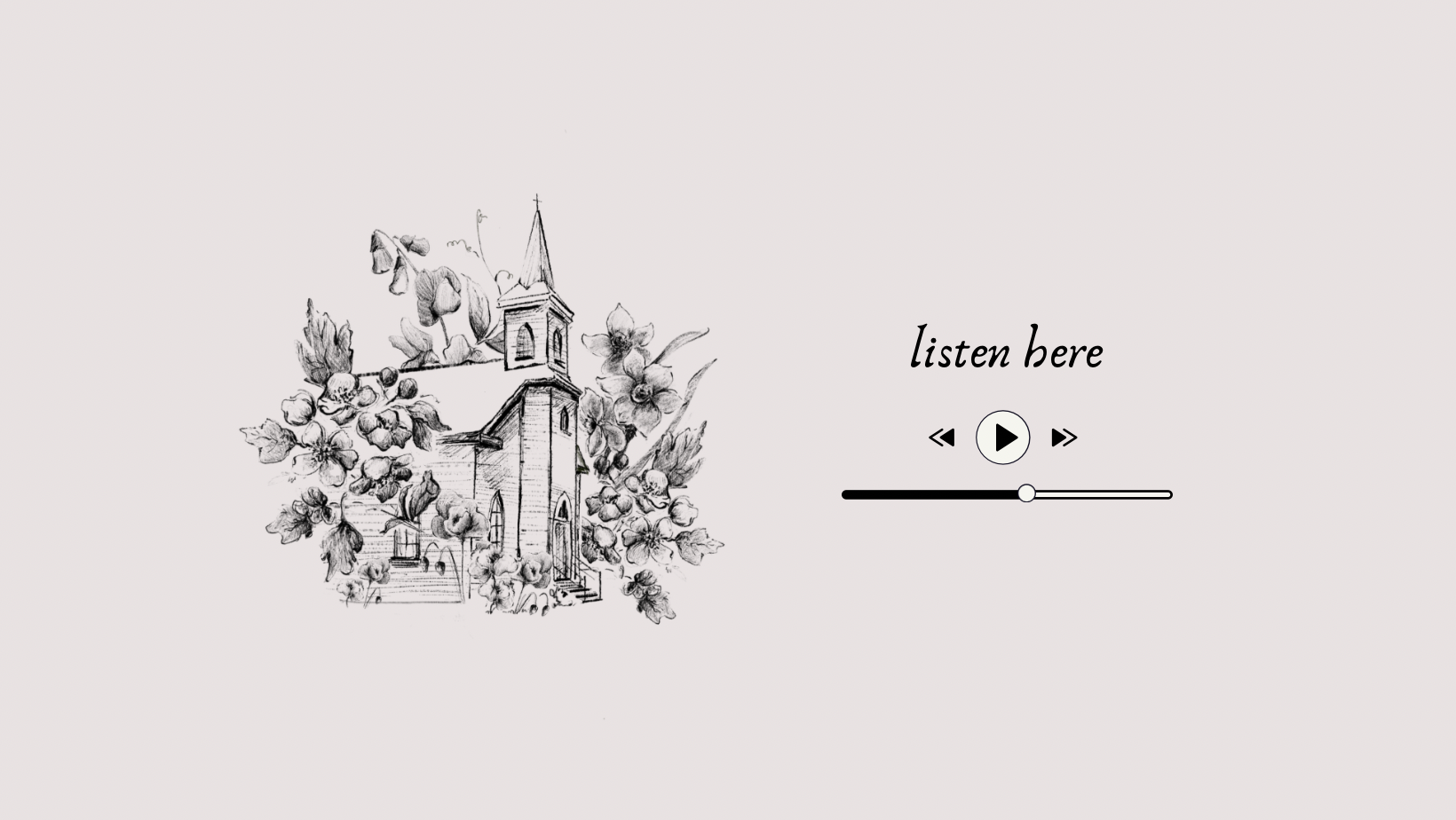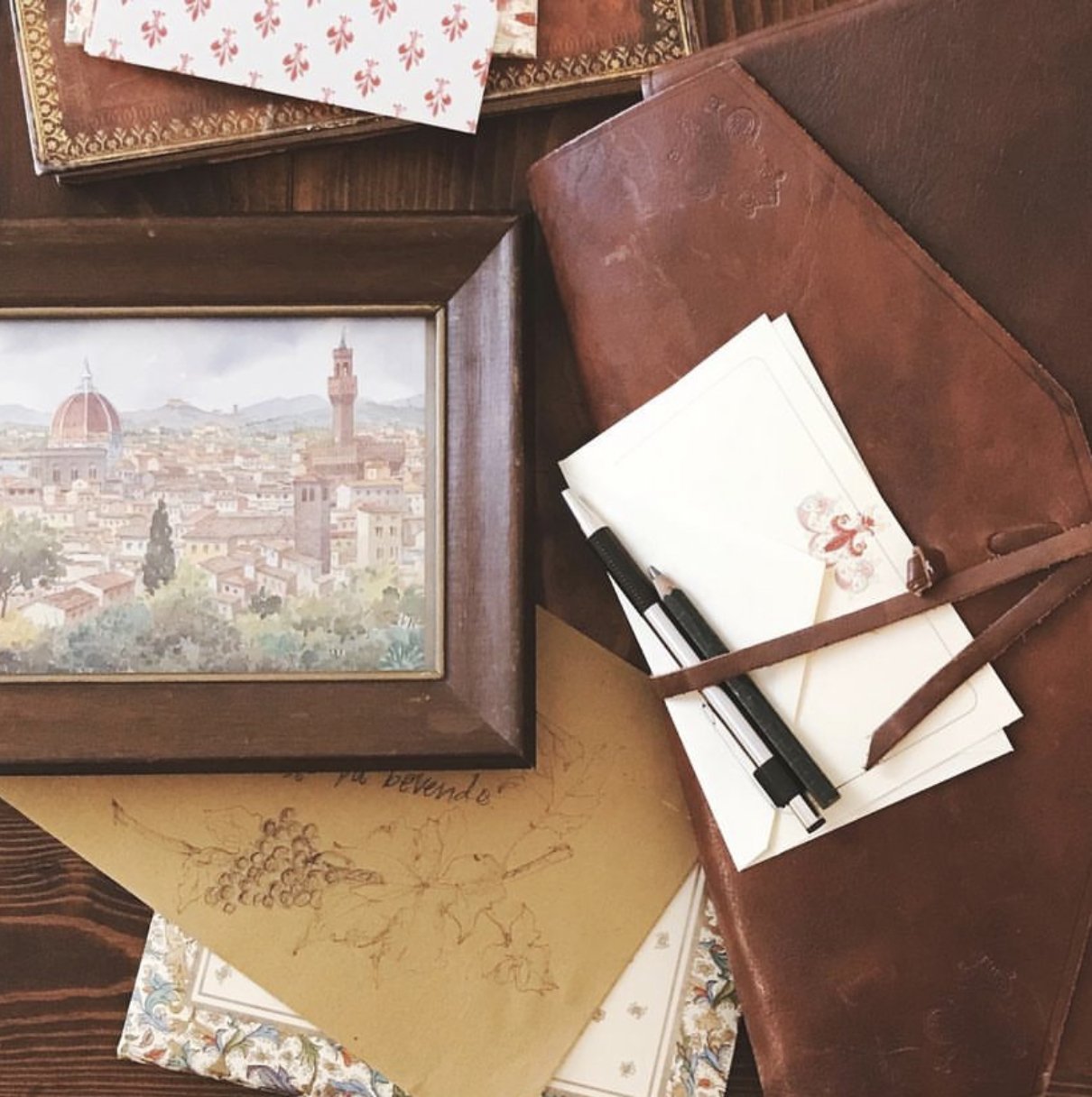
Katy Rose Collection: Art, Words
Peaceful Home Hack: Dishwasher to Table
When unloading the dishwasher in the morning, take the clean plates, silverware, and cups right back over to the table and set it for dinner. Creates a pretty table for the day, and keeps the mess away. And when dinner's ready, the table's already set!
Notes on Painting with My Son
I wanted to share a few notes my youngest son and I took when recently working on an Impressionistic landscape painting together:
Read about the father of Impressionism, Claude Monet, in the book, Monet’s Garden, by Laurence Anholt.
Got out supplies: drop cloth, a few brushes, canvas or thick watercolor paper, acrylic paints, water, palette (paper plate for us.)
Created an underpainting. Cover the canvas or paper in a watered-down single shade and use the paintbrush to sketch in a loose drawing of what you plan to paint.
Mixed colors or choose existing paint colors. We mixed all our colors using the three primary colors, red, yellow, and blue, plus a little white and black.
Started painting the picture! We were working on a mountain landscape. Lots of artists reach a point known as the “messy middle” where they are no loving their painting, but keep going and persevere to the end!
Considered where the light source was in the picture. We were thinking about where the sun was rising from behind the mountains. Based on the light source, we painted in where the brighter spots would be in the landscape, and where the shadows would be.
Add a little signature or initials to the bottom corner. This always reminds me that each work of art was not created by some nameless machine, but by a human hand, and makes me appreciate a painting I see all the more.
To read a little more about Impressionism, read my post here.
Friday Hymn: Jesus, I Come to Thee
JESUS, I COME TO THEE
-1877-
Words by: William T. Sleeper
Music by: George C. Stebbins
In her book, In My Father’s House, Corrie ten Boom tells about the children she worked with for years who had disabilities. One day she walked through the old cobblestone streets of Haarlem, in Holland, to visit one of the boys who attended her little class. In his cramped house, she found him up in his attic room. “I went upstairs and found Henk on his knees in front of a chair. Before him was an old dirty picture of Jesus on the cross. I stopped at the door to listen, for Henk was singing. His voice was soft and hoarse.
Out of my bondage, sorrow, and night,
Jesus, I come! Jesus, I come!
Into Thy freedom, gladness, and light,
Jesus, I come to Thee!
Out of my sickness into Thy health,
Out of my want and into Thy wealth,
Out of my sin and into Thyself,
Jesus, I come to Thee!”
Corrie writes, “I’ve heard Bach played by Schweitzer, and anthems sung by gigantic choirs, but at that moment I felt as if I were in a cathedral with angels surrounding me. I tiptoed back downstairs without disturbing him, praising God again for the love he brings…”
The hymn was written about 50 years before, in Worcester, Massachusetts, where William T. Sleeper was engaged in mission work. He later traveled to Maine as a missionary, establishing three churches, before returning to Worcester where he ministered for thirty more years. I hope he would be delighted to hear his song sung by a little boy in an attic in Holland.






